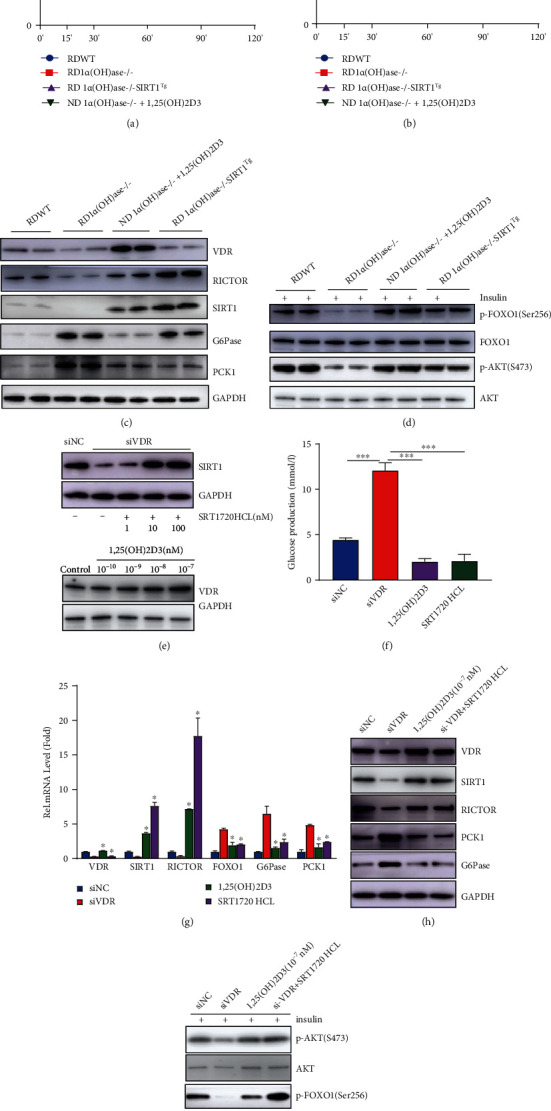Figure 5.

Supplementation of 1,25(OH)2D3 or overexpression of Sirt1 alleviates hepatic glucose overproduction and glucose metabolism disorders caused by 1,25(OH)2D3 deficiency. (a) PTT performed in mice of different treatment groups. Blue line: RDWT group; red line: RDKO group; purple line: RD 1α(OH)ase-/-SIRT1Tg group; green line: ND 1α(OH)ase-/-+1,25(OH)2D3 group. (b) GTT performed in mice of different treatment groups. Blue line: RDWT group; red line: RDKO group; purple line: RD 1α(OH)ase-/-SIRT1Tg group; green line: ND 1α(OH)ase-/-+1,25(OH)2D3 group. (c) Expression levels of proteins including VDR, Sirt1, Rictor, PCK1, and G6PC collected from liver samples of mice of each group under normal feeding conditions. (d) Phosphorylation of AKT-S473 and FOXO1-S256 in the liver of mice stimulated with insulin. (e) VDR and Sirt1 protein expression levels in HepG2 cells treated with different concentrations of 1,25(OH)2D3 or Sirt1 agonists (SRT1720HCL) were determined by Western blotting. (f) Glucose production content of HepG2 cells with knockdown of VDR or treated with 1,25(OH)2D3 or SRT1720 HCL in response to pyruvate stimulation. ∗∗∗P < 0.001; blue bar: si-NC group; red bar: si-VDR group; purple bar: 1,25(OH)2D3 group; green bar: SRT1720HCL group. (g) Detection of mRNA expression of related genes in the liver of different treatment groups (qRT-PCR). ∗P < 0.05. (h) Western blotting was performed to detect the expression levels of related proteins in different treatment groups of HepG2 cells. (i) The phosphorylation of AKT-S473 and FOXO1-S256 in HepG2 cell treated with different concentrations of 1,25(OH)2D3 and Sirt1 agonist (SRT1720HCL) in response to insulin stimulation was measured by Western blotting.
